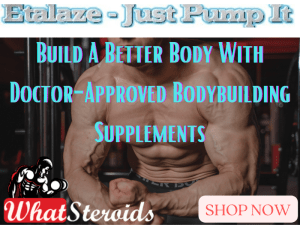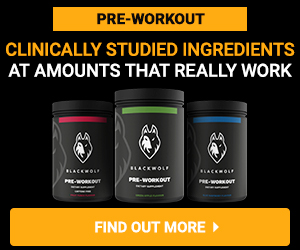Nutrition
Everything Nutritional Food: What’s Too Much Or Too Little

When it comes to bodybuilding, overeating can result in consuming too many calories and potentially gaining weight, which may not be ideal for muscle building. Therefore, it is crucial to maintain a balanced and personalized nutrition plan that aligns with your specific goals. By that we're talking about nutritional food every bodybuilder must stick to.
Consuming more calories than your body needs for muscle growth can lead to fat gain. Similarly, not eating enough food can hinder muscle development. It's crucial to calculate your calorie and macronutrient needs based on your goals and activity level and consult with a fitness or nutrition professional for personalised guidance.
How to Measure Calories to Ensure Nutritional Food as a Bodybuilder
As a bodybuilder, accurately measuring calorie intake is crucial for your nutrition plan. Here are some steps to help you count calories in your food:
Use a Food Scale
Invest in a digital kitchen scale to weigh your food. This allows you to measure portions accurately.
Read Nutrition Labels
Many packaged foods have nutrition labels that provide calorie information per serving. Pay attention to serving sizes and servings per container.
Use Calorie Tracking Apps
Many smartphone apps like MyFitnessPal and Cronometer make it easy to track your calorie intake. You can search for the foods you're eating and specify the portion size, and the app will calculate the calories.
Reference Online Databases
If you can't find a nutrition label, you can often find calorie information for various foods in online databases and reference books.
Learn to Estimate
Over time, you'll better estimate portion sizes and calorie content. This skill is valuable when you can't weigh or measure every meal.
Consider Macronutrients
While tracking calories, don't forget to pay attention to your macronutrient intake (proteins, carbs, fats). These are also crucial for bodybuilders.
Be Consistent
It's essential to be consistent in tracking. Measure and record your food every day to get a better understanding of your calorie intake.
Adjust for Cooking
Remember that cooking can change food weight (due to water loss). Weigh food before cooking for more accurate calorie tracking.
Consult a Nutritionist
If you're unsure about your calorie needs or struggle with tracking, consider consulting a registered dietitian or nutritionist who can help you create a personalised nutrition plan.
Related Article: 30 Gym Slang Terms Explained
Measuring and tracking calories accurately is an essential part of bodybuilding, as it helps you control your intake and adjust your diet to meet your specific goals.
Nutritional Food You Must Include In Your Diet
To effectively build muscle mass, it's essential to maintain a balanced diet consisting of nutrient-rich foods. Here are some foods that are best for building muscle:
1. Lean Proteins
Protein is essential for muscle growth. Opt for lean sources like chicken, turkey, fish, lean beef, tofu, tempeh, eggs, and low-fat dairy products. Plant-based sources like beans, lentils, and quinoa are also excellent options.
2. Complex Carbohydrates
Carbohydrates provide energy for workouts and recovery. Choose complex carbs like whole grains (brown rice, quinoa, oats), sweet potatoes, and whole-wheat pasta.
3. Healthy Fats
Good fats are essential for overall health. Include sources like avocados, nuts, seeds, and olive oil.
4. Dairy or Dairy Alternatives
Dairy products and dairy alternatives like almond milk or soy milk can provide additional protein and calcium.
5. Fruits and Vegetables
These are rich in vitamins, minerals, and antioxidants, which support overall health and recovery.
6. Nuts and Seeds
Almonds, walnuts, chia seeds, and flaxseeds are excellent sources of healthy fats and protein.
7. Greek Yogurt
It's high in protein and can be a good snack or breakfast option.
8. Salmon
Rich in omega-3 fatty acids and high-quality protein, salmon can support muscle growth and overall health.
9. Quinoa
A complete protein source and a great alternative to rice or pasta.
10. Beans and Lentils
These are excellent sources of plant-based protein and fibre.
11. Whey Protein
A convenient way to supplement your protein intake, especially post-workout.
12. Eggs
Eggs are a highly bioavailable source of protein and contain essential amino acids.
13. Lean Beef
It provides high-quality protein, iron, and essential nutrients.
14. Chicken or Turkey Breast
Lean poultry is a staple for many bodybuilders due to its protein content and low-fat
15. Tofu and Tempeh
Good plant-based protein sources, especially for vegetarians and vegans.
16. Cottage Cheese
It's high in protein and low in fat, making it a great addition to your diet.
A well-balanced diet is vital. Ensure you consume enough calories to support muscle growth and consider your macronutrient balance. Staying hydrated is also essential. You might need to adjust your calorie and protein intake based on your goals, activity level, and body size, so it's a good idea to consult a nutritionist or dietitian for a personalised plan.
Should Bodybuilders Avoid Some Not-So- Nutritional Food Altogether?
While there are no foods that bodybuilders must avoid, some foods are less ideal due to their potential negative impact on health and fitness goals. These include:
Read More: Meet the World’s Strongest Grannies
Processed Foods
Highly processed foods are often high in empty calories, added sugars, unhealthy fats, and low in nutrients. They can contribute to weight gain and hinder muscle-building efforts.
Sugary Snacks and Beverages
Foods and drinks with excessive added sugars can lead to energy spikes and crashes, as well as weight gain. They offer little nutritional value.
Trans Fats
Foods containing trans fats, such as many fast-food items and some packaged baked goods, are linked to heart disease and should be limited
Sugary Cereals
Many breakfast cereals contain added sugars and lack essential nutrients. Opt for whole-grain, low-sugar options instead.
Alcohol
Excessive alcohol consumption can impair muscle recovery and protein synthesis. It can also contribute to dehydration and poor dietary choices.
Excessive Fast Food
While an occasional indulgence is acceptable, relying on fast food for a significant portion of your diet can lead to poor nutrition and hinder muscle gains.
Highly Caffeinated or Sugary Energy Drinks
These may provide a temporary energy boost, but the sugar and caffeine content can harm health and lead to crashes.
Fried Foods
Fried foods often contain unhealthy fats and calories. While occasional consumption is acceptable, they shouldn't be a regular part of your diet.
Excessive Saturated Fats
Limit foods high in saturated fats, like fatty cuts of red meat and full-fat dairy products. While some saturated fats are okay, too much can harm heart health.
Excessive Salt
High-sodium foods can lead to water retention and may negatively affect blood pressure. Limit processed foods and opt for fresh, whole foods.
It's essential to maintain balance and moderation in your diet. Occasional indulgences are OK, but your primary focus should be on nutrient-dense, whole foods that support your muscle-building and overall health goals. Consulting with a nutritionist or dietitian can help you create a personalised diet plan that aligns with your objectives.
Sea Food to Consider for Gains
Seafood is a healthy and delicious choice, rich in protein, omega-3 fatty acids, and various essential nutrients. Here are some healthy seafood options and basic preparation methods:
Salmon:
-
- Grilled: Season with herbs, spices, and a bit of olive oil, then grill until it flakes easily.
- Baked: Marinate with lemon, herbs, and olive oil, then bake in the oven.
- Pan-Seared: Sear in a hot skillet with a little oil, skin side down, until crispy, then finish in the oven.
-
Tuna:
- Sushi/Sashimi: Serve raw as sashimi or in sushi rolls.
- Grilled or Broiled: Season with soy sauce, ginger, and garlic, then grill or broil until desired doneness.
-
Shrimp:
- Shrimp Scampi: Sauté in garlic, butter, and white wine.
- Grilled: Thread onto skewers and grill with marinade or spices.
-
Cod:
- Baked: Coat with breadcrumbs and herbs, then bake until it flakes easily.
- Poached: Simmer in seasoned broth or white wine until opaque.
-
Mackerel:
- Pan-Fried: Coat with a light breading, then pan-fry until crispy.
- Smoked: Serve smoked mackerel with crackers and cream cheese.
-
Sardines:
- Canned: Eat canned sardines with olive oil, lemon, and crackers or on top of a salad.
- Grilled: Season and grill sardines with olive oil until they're crisp and fragrant.
-
Trout:
- Stuffed: Stuff with herbs, lemon, and garlic, then bake or grill.
- Almondine: Sauté with butter, lemon juice, and toasted almonds.
-
Haddock:
- Baked: Season with herbs and breadcrumbs, then bake until tender.
- Poached: Poach in a flavorful broth or white wine.
-
Scallops:
- Pan-Seared: Sear in a hot pan with butter or oil for a few minutes on each side.
- Broiled: Season and broil until lightly browned and opaque.
When preparing seafood, remember to handle it safely and avoid overcooking, as seafood tends to become dry when overdone. You can customize these cooking methods with various herbs, spices, and sauces to suit your taste preferences. Additionally, be mindful of sustainable seafood choices and check for local advisories on fish consumption, especially for pregnant women and children, due to potential mercury content.
Must Read: Using SARMs on Top of a Steroid Cycle: DOs and DON
Proper Storage of Food to Keep It Fresh
-
Refrigeration:
- Keep perishable items like meat, dairy, and leftovers in the refrigerator at or below 40°F (4°C).
- Store raw meat separately to prevent cross-contamination.
- Use airtight containers or food storage bags to seal items to prevent moisture loss and odors from spreading.
-
Freezing:
- Freeze items at 0°F (-18°C) or lower for long-term storage.
- Use freezer-safe containers or vacuum-sealed bags to prevent freezer burn.
- Label items with the date to keep track of storage time.
-
Pantry:
- Store dry goods like pasta, rice, and canned foods in a cool, dry place away from direct sunlight.
- Use airtight containers to keep pests out and maintain freshness.
-
Fruits and Vegetables:
- Some fruits and vegetables should be stored separately due to ethylene gas production (e.g., apples and avocados).
- Check for specific requirements for each item, as some should be stored in the fridge, while others are better at room temperature.
-
Keep an Eye on Expiration Dates:
- Regularly check expiration dates on packaged foods and discard items that have passed their date.
-
Properly Seal Containers:
- Ensure containers are tightly sealed to prevent moisture and air from entering, which can lead to spoilage.
-
FIFO (First In, First Out):
- Practice the "first in, first out" method to use older items before newer ones to avoid food waste.
-
Handle Leftovers:
- Refrigerate or freeze leftovers promptly, and use them within a reasonable time frame.
-
Be Mindful of Temperature Zones:
- Know the temperature zones in your fridge (e.g., coldest at the back and warmest on the door) and store items accordingly.
-
Regularly Clean Your Storage Areas:
- Clean your refrigerator, pantry, and cabinets to prevent the growth of bacteria and mold.
Remember that specific foods may have unique storage requirements, so it's important to check packaging labels and do some research when in doubt. Proper food storage helps maintain freshness and reduces food waste.
Packing Your Food Discretely to Eat at the Gym
- Choose the right container: Opt for containers that are compact and easy to carry, like a small Tupperware or a bento box.
- Select inconspicuous foods: Choose foods that are quiet to eat and won't disturb others. Avoid noisy snacks like chips.
- Pack pre-portioned snacks: Prepare single servings of your snacks to avoid rustling around in a noisy bag or container.
- Use noise-reducing wrappers: Wrap your snacks in noise-dampening materials, like cloth napkins or silicone food wraps, to reduce crinkling sounds.
- Opt for quieter options: Consider snacks like protein bars, pre-cut fruit, or a smoothie in a shaker bottle, which are less likely to make noise.
- Be mindful of odors: Choose foods that won't emit strong odors in the gym. Stick to odorless options like nuts, dried fruit, or yogurt.
- Pack a reusable water bottle: Bring a reusable, non-disruptive water bottle to stay hydrated without making noise with plastic crinkling.
Remember to be respectful of others in the gym and maintain good hygiene when consuming your discreetly packed food.
Going for a Jog and Want to Snack In Between?
Snacking while jogging can be tricky, as it's important to maintain focus on your run and safety. If you need a quick energy boost, consider portable, easy-to-eat options like energy gels or chews that can be consumed with minimal interruption.
Just make sure to dispose of the packaging responsibly. Hydration is often more critical than snacking during a run, so prioritize water or a sports drink for longer workout.
It's best to consume easily digestible snacks that provide a quick energy boost. Some good options include energy gels, granola bars, banana slices, or a handful of raisins.
When running or jogging, it's important to consume snacks that provide a quick energy boost and are easy to carry. Some good options include:
- Energy gels or chews: These are specifically designed for quick energy replenishment during exercise.
- Bananas: They're portable, rich in carbohydrates, and contain potassium.
- Trail mix: A mix of nuts, seeds, and dried fruits can provide a good balance of nutrients.
- Nut butter packets: Portable and packed with healthy fats and protein.
- Rice cakes or rice bars: A lightweight, easy-to-carry option with carbohydrates.
- Fig bars: These provide a blend of carbohydrates and are easy to eat on the go.
You can always experiment to find what works best for your body and your preferences while running.
Tips to Prepare a healthy Balanced Nutritional Food
Preparing a healthy, balanced meal as a bodybuilder involves selecting the right components in the proper proportions. Here are steps to help you prepare such a meal:
1. Choose a Lean Protein Source
Start with a lean protein source such as chicken, turkey, fish, lean beef, tofu, or beans. Protein is crucial for muscle growth and repair.
2. Add Complex Carbohydrates
Incorporate complex carbohydrates like brown rice, quinoa, sweet potatoes, or whole-wheat pasta. Carbs provide energy for your workouts and help replenish glycogen stores.
3. Include Vegetables
Vegetables are rich in vitamins, minerals, and fibre. Opt for various colourful options, like broccoli, spinach, bell peppers, and carrots.
4. Incorporate Healthy Fats
Include sources of healthy fats like avocados, nuts, seeds, or olive oil. Fats are essential for overall health and hormone production.
5. Measure Portions
Use a food scale to measure and control your portion sizes. Balancing your macros (protein, carbs, and fats) is essential.
6. Season and Flavor
Use herbs, spices, and low-sodium sauces to add flavour to your meal without excess calories or sodium.
7. Hydrate
Don't forget to drink water. Staying hydrated is essential for overall health and muscle function.
8. Preparation Methods for Nutritional Food
Opt for healthy cooking methods like grilling, baking, steaming, or sautéing with minimal oil. Avoid deep-frying.
9. Post-Workout Nutrition
After a workout, consider a post-workout meal or shake that combines protein and carbohydrates to support muscle recovery and replenish glycogen stores.
10. Plan
Meal planning and preparation in advance can help you stick to your nutrition goals. Cook larger batches and store leftovers for future meals.
11. Monitor Progress
Keep track of your dietary intake and how it affects your body and performance. Adjust your meal plan as needed to meet your goals.
12. Consult a Nutritionist
If you're unsure about portion sizes, macros, or specific dietary needs, consult a nutritionist or dietitian who can create a customised nutrition plan.
It's important to customize your meals to your individual goals, activity level, and dietary preferences as everyone's nutritional needs vary. Consistency in healthy eating, combined with a well-structured workout plan, will contribute to success in bodybuilding.
Best Calorie-Measuring Equipment and Machines
For bodybuilders and fitness enthusiasts looking to accurately measure calorie intake, various kitchen appliances and gadgets can be helpful. Here are some of the best calorie-measuring machines and tools:
Digital Kitchen Scale
A high-quality digital kitchen scale is essential for measuring the weight of food items accurately. It allows you to calculate calories based on portion size.
Nutrition Scale
Some kitchen scales have built-in nutritional information databases. You can input the food item's code or name, and the scale calculates the nutritional content, including calories.
Smartphone Apps
There are several smartphone apps, such as MyFitnessPal and Cronometer, that allow you to track your calorie intake by searching for foods and specifying portion sizes. These apps often have extensive food databases.
Food Processors with Nutrition Calculators
Some food processors have built-in nutrition calculators that provide information about the calories, macronutrients, and other nutritional content of your recipes.
Smart Kitchen Gadgets
Various smart appliances, like intelligent blenders and air fryers, may have built-in nutrition tracking features. They can provide approximate nutritional information for your recipes.
Handheld Calorie Counters
These portable devices are designed precisely to calculate the nutritional content of food. You input the food item or scan its barcode, and the device provides calorie information.
Online Recipe Analyzers
There are websites and software tools that allow you to input the ingredients and quantities of your recipes, and they will calculate the nutritional content, including calories.
Meal Prep Containers
While not a machine per se, having portion-controlled meal prep containers can help you estimate and control calorie intake by pre-measuring your meals.
When it comes to measuring calories, choosing the right tool depends on your preferences and requirements. Digital kitchen scales are essential for precise portion control, while smartphone apps offer convenience and access to extensive databases. Consider your budget, the features you need, and your level of tech-savviness before selecting the appropriate calorie-measuring machine to help you achieve your bodybuilding goals.
Why Bodybuilders Must Eat Healthy Before a Competition
Bodybuilders must eat healthy before a competition for several important reasons:
1. Optimal Performance
Eating a nutritious diet before a competition ensures your body is fueled and ready to perform at its best. Nutrient-dense foods provide the energy required for intense workouts and help maintain strength and stamina during the competition.
2. Muscle Preservation
Proper nutrition helps preserve lean muscle mass. In the weeks leading up to competition, bodybuilders often go through a cutting phase to reduce body fat. Eating a balanced diet with adequate protein helps prevent muscle loss while shedding excess fat.
3. Nutrient Timing
The timing of meals and nutrient intake is crucial. Bodybuilders typically follow a precise nutrition plan leading up to competition, including carb-loading to maximise muscle glycogen stores and protein intake to support muscle repair and growth.
4. Recovery
Nutritional food aids in recovery between workouts. Intense training sessions can lead to muscle damage, and consuming the proper nutrients helps speed recovery and reduce the risk of overtraining.
5. Aesthetics
The appearance of bodybuilders on stage is highly dependent on their diet. The right balance of macronutrients, proper hydration, and avoiding foods that cause bloating or water retention contribute to a more chiselled and defined physique.
6. Mental Focus
Nutrition affects mental clarity and focus. Eating a healthy diet before a competition can help bodybuilders stay mentally sharp, making it easier to follow their routines and perform their best.
7. Digestive Comfort
Avoiding foods that can cause digestive discomfort, such as excessive fibre or spicy foods, is crucial to prevent gastrointestinal issues during the competition.
8. Hydration
Proper hydration is vital for overall health and performance. Dehydration can lead to muscle cramps, fatigue, and decreased athletic performance.
9. Body Composition
Following a clean, balanced diet helps bodybuilders reach their target body composition with minimal fat and maximum muscle definition, which is essential for success on stage.
Conclusion
To sum up, maintaining a healthy diet is extremely important for various reasons such as enhancing physical performance, preserving muscles, quick recovery, improving appearance, increasing mental focus and achieving overall success. Bodybuilders meticulously plan their diets not only to ensure they are in top condition for competition day but also to maintain optimal physical fitness.
Also Read: Running and Bodybuilding: Is it a Good Idea to Mix Them?
Bodybuilding
Are Nootropics a Better Option to AAS?

Nootropics in bodybuilding refer to supplements or substances that enhance cognitive functions such as focus, memory, motivation, and mental clarity. While traditional bodybuilding supplements focus on muscle growth, strength, and endurance, nootropics target the mental aspect of training. Improved focus and motivation can lead to better workouts, more consistent training, and ultimately better results.
Must Read: A New Caffeine? What You Need to Know about Teacrine
Here are some common nootropics used in bodybuilding:
Caffeine: Widely used for its stimulant effects, caffeine can boost energy, focus, and endurance during workouts.
L-Theanine: Often combined with caffeine, L-Theanine promotes relaxation without drowsiness, helping to balance out the jittery effects of caffeine.
Alpha-GPC: A source of choline that supports the production of acetylcholine, a neurotransmitter essential for cognitive function and muscle contraction.
Rhodiola Rosea: An adaptogen that helps reduce fatigue and improve mental resilience, making it useful for both physical and mental performance.
Bacopa Monnieri: Known for enhancing memory and reducing anxiety, Bacopa is popular for those who want to stay mentally sharp during intense training phases.
Lion’s Mane Mushroom: A natural nootropic that supports brain health, cognitive function, and reduces mental fatigue.
Phenylpiracetam: A racetam-class nootropic that is known for its stimulating effects and ability to enhance focus and mental energy, which can be beneficial during challenging workout sessions.
Stacking Nootropics With AAS
Stacking nootropics with anabolic-androgenic steroids (AAS) in bodybuilding can be an advanced approach to optimizing both physical and mental performance. Here’s a guide on how to combine these substances effectively:
Understanding the Purpose of the Stack
Combining nootropics with AAS aims to enhance not only muscle growth, strength, and recovery (which AAS focus on) but also mental aspects like focus, motivation, and mood (which nootropics address). This stack can help bodybuilders push through plateaus, manage training stress, and maintain peak performance.
Common Nootropics to Stack with AAS
Caffeine + L-Theanine: Enhances alertness and focus while reducing anxiety. Helps with energy and focus during intense workouts.
Alpha-GPC: Boosts acetylcholine levels, improving mental clarity and enhancing the mind-muscle connection.
Rhodiola Rosea: Mitigates stress and fatigue, which is crucial during heavy steroid cycles where physical and mental stress is higher.
Lion’s Mane Mushroom: Promotes cognitive health and neuroprotection, helping you stay sharp during longer cycles.
Bacopa Monnieri: Reduces anxiety and improves memory, supporting better recovery and relaxation outside the gym.
Tips for Stacking
Start with Lower Doses: If you’re new to either nootropics or AAS, start with minimal doses and gradually adjust based on how your body responds. Stacking too much too soon increases the risk of side effects.
Cycle Both Nootropics and AAS: Just like AAS, it’s wise to cycle nootropics to avoid tolerance buildup. For instance, you might use nootropics for 6-8 weeks and then take a break, aligning this cycle with your AAS cycle.
Prioritize Liver and Organ Health: Both nootropics and AAS can stress the liver and other organs. Incorporate liver support supplements like milk thistle, NAC (N-Acetyl Cysteine), and TUDCA (Tauroursodeoxycholic Acid).
Stay Hydrated and Maintain Proper Nutrition: Both nootropics and AAS can increase metabolic demands. Staying hydrated and following a nutrient-rich diet ensures better overall performance and health.
Related Article: Protein Powder Supplement Comparison – Which Type To Choose?
Sample Stack for a Cutting Phase
Nootropics: Caffeine + L-Theanine, Alpha-GPC, Rhodiola Rosea
AAS: Testosterone Propionate, Trenbolone Acetate, Anavar (Oxandrolone)
Support Supplements: Liver support (NAC, TUDCA), multivitamins, omega-3s
This stack can help maintain muscle mass, enhance focus and energy during workouts, and support mental well-being during calorie deficits.
Sample Stack for a Bulking Phase
Nootropics: Lion’s Mane, Bacopa Monnieri, Alpha-GPC
AAS: Testosterone Enanthate, Deca-Durabolin (Nandrolone Decanoate), Dianabol (Methandrostenolone)
Support Supplements: Joint support (collagen, glucosamine), digestive enzymes, liver support
This combination can boost cognitive function, improve recovery, and support the intense training needed for mass-building phases.
Stacking nootropics with AAS can offer significant benefits for bodybuilders aiming for peak mental and physical performance. However, it’s critical to approach this strategy with caution, considering the possible interactions and side effects. Always consult a healthcare professional before starting any stack, especially one involving AAS and nootropics.
Possible Side Effects Associated With Nootropics
While nootropics can enhance cognitive function, focus, and motivation, they can also cause side effects, especially when used in high doses or stacked with other supplements like anabolic-androgenic steroids (AAS). Some common side effects associated with nootropics in bodybuilding include:
1. Insomnia and Sleep Disturbances
Many nootropics, especially stimulants like caffeine, can lead to difficulties falling asleep or maintaining restful sleep. This is particularly problematic if taken late in the day, as sleep is critical for recovery and muscle growth.
2. Anxiety and Nervousness
Nootropics that stimulate the central nervous system (e.g., caffeine, phenylpiracetam) can increase anxiety, jitteriness, or nervousness, especially when combined with other stimulants or during periods of high stress.
3. Headaches
Certain nootropics, particularly racetams (like piracetam or aniracetam), can deplete choline levels in the brain, leading to headaches. Supplementing with choline sources like Alpha-GPC can help mitigate this side effect.
4. Gastrointestinal Issues
Some nootropics may cause nausea, stomach cramps, or diarrhea, especially if taken on an empty stomach or in high doses.
5. Mood Swings and Irritability
Nootropics that affect neurotransmitter levels (like dopamine or serotonin) can lead to mood swings, irritability, or even depressive symptoms if used improperly or if taken in combination with AAS, which can already impact mood.
6. Tolerance and Dependence
Frequent use of certain nootropics, particularly stimulants, can lead to tolerance, where increasing doses are needed to achieve the same effect. This can also result in dependence, where users feel they need the nootropic to function optimally.
7. Overstimulation
High doses or the wrong combination of nootropics can cause overstimulation, leading to symptoms like rapid heart rate, high blood pressure, and excessive sweating. This can be particularly risky during intense workouts.
8. Cognitive Fatigue or Brain Fog
In some cases, nootropics intended to boost focus or clarity can backfire, leading to cognitive fatigue or brain fog. This can happen due to overloading neurotransmitter pathways or poor dosing strategies.
9. Interactions with Other Supplements or Medications
Nootropics may interact with other bodybuilding supplements, medications, or AAS, leading to unexpected side effects. For example, combining stimulants like caffeine with pre-workouts or fat burners can amplify side effects like anxiety or heart palpitations.
10. Long-Term Safety Concerns
The long-term effects of many nootropics are not well-studied, especially when taken in high doses or combined with other substances. Chronic use could potentially lead to neurological imbalances or organ stress over time.
Mitigating Risks
Start Low and Go Slow: Begin with low doses and gradually increase to assess your tolerance.
Cycle Usage: Avoid using the same nootropics daily to prevent tolerance and dependence.
Stay Hydrated and Eat Well: Proper hydration and nutrition can reduce the risk of gastrointestinal and cognitive issues.
Monitor Your Response: Keep track of how you feel when taking nootropics and adjust accordingly if you notice negative side effects.
Consult a Professional: If you’re stacking nootropics with other substances like AAS, it’s essential to get medical advice to avoid harmful interactions.
While nootropics can offer cognitive and motivational benefits in bodybuilding, responsible use and monitoring are key to minimizing side effects.
Take Away
To conclude, nootropics can help bodybuilders maintain high levels of mental energy, motivation, and focus during training, which is essential for pushing through tough workouts and staying consistent with your fitness goals. However, as with any supplement, it’s important to research and consider potential side effects and interactions.
Don't Miss: Horse Chestnut and Other Supplements to Get Rid of Water Retention
Bodybuilding
How Effective is Bone Broth for Recovery?
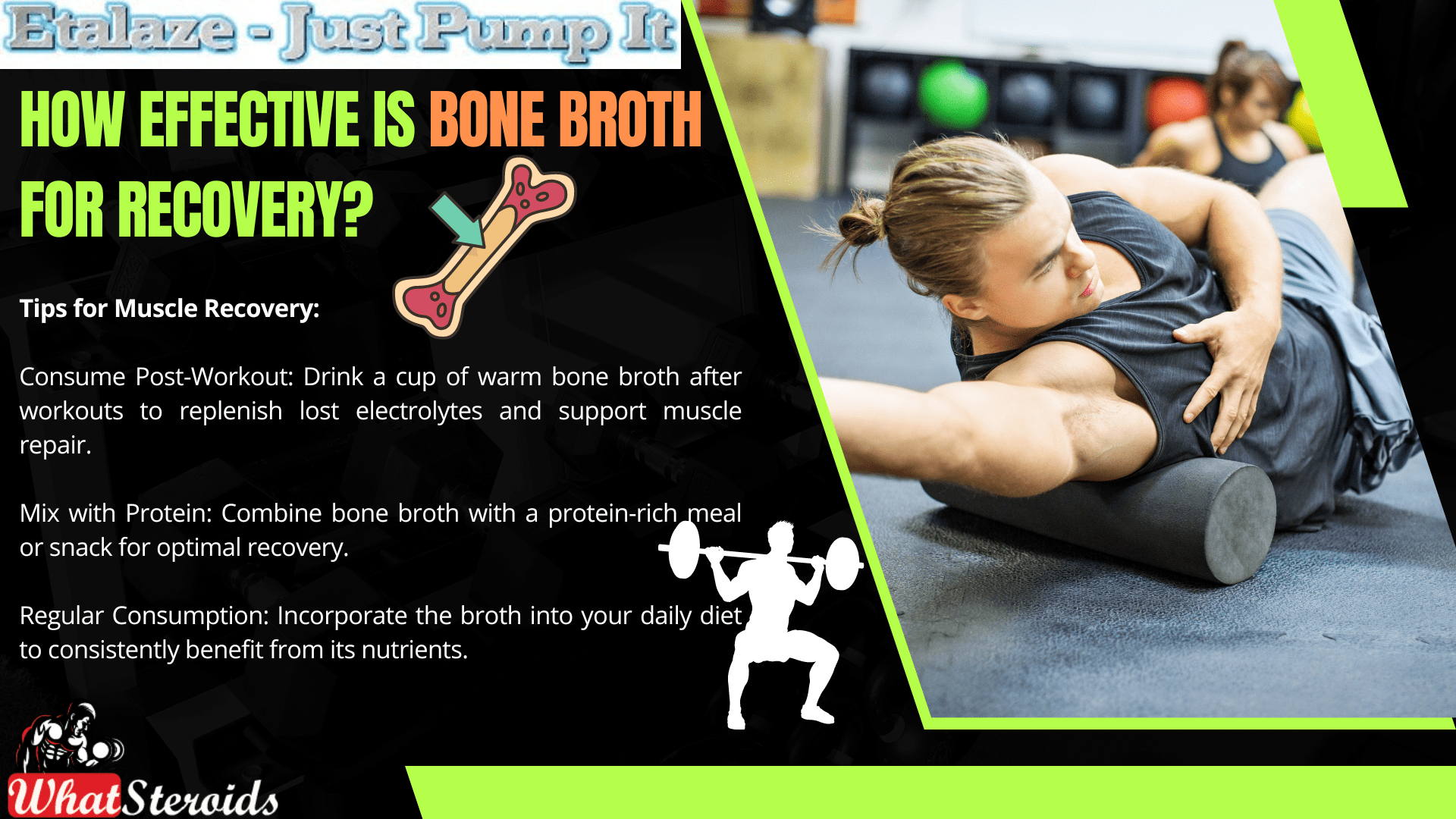
Bone broth has gained popularity in the fitness community, including among bodybuilders, due to its potential benefits for recovery. It is a nutrient-dense liquid made by simmering animal bones and connective tissues for an extended period. This process extracts a variety of beneficial compounds and nutrients. Here's how it is effective for post-workout recovery:
1. Bone Broth is Rich in Collagen and Gelatin:
Bone broth is high in collagen, a protein that supports joint, tendon, and ligament health. Gelatin, derived from collagen, may help reduce joint pain and inflammation, which is beneficial after intense workouts.
2. Amino Acid Profile:
Bone broth contains important amino acids like glycine, proline, and glutamine. These amino acids support muscle repair and growth, immune function, and gut health—all crucial for recovery.
3. Electrolytes and Hydration:
It provides electrolytes like potassium, magnesium, and calcium, which help with hydration and muscle function. Proper hydration is key to recovery and preventing cramps or muscle fatigue.
4. Mineral Content:
Bone broth is rich in essential minerals like calcium, phosphorus, and magnesium. These minerals contribute to bone health and muscle contraction, supporting recovery.
5. Anti-Inflammatory Properties:
The nutrients in the broth may help reduce inflammation, speeding up recovery and reducing soreness after workouts.
6. Supports Gut Health:
Bone broth can help heal and maintain the gut lining, which is important for nutrient absorption and overall recovery.
Must Read: Best supplements for College students
How to Prepare Bone Broth at Home
Preparing bone broth at home is straightforward and can be customized to fit your dietary needs for muscle recovery. Here’s a step-by-step guide:
Ingredients:
- Bones: Use a mix of beef, chicken, pork, or fish bones. Marrow bones, knuckles, and joints are especially rich in collagen.
- Vegetables (optional): Carrots, celery, onions, and garlic add flavor and nutrients.
- Vinegar: 1-2 tablespoons of apple cider vinegar help draw out minerals from the bones.
- Herbs and Spices (optional): Bay leaves, thyme, rosemary, and peppercorns for added flavor.
- Water: Enough to cover the bones and vegetables.
Instructions to Prepare Bone Broth
- Prepare the Bones:
- Roasting (optional but recommended): Roast the bones in the oven at 400°F (200°C) for 30-40 minutes. This enhances the flavor of the broth.
- Place Bones in a Pot:
- Transfer the bones to a large stockpot, slow cooker, or pressure cooker.
- Add Vegetables and Vinegar:
- Add your chosen vegetables and the apple cider vinegar to the pot. Vinegar is crucial as it helps extract the minerals from the bones.
- Cover with Water:
- Add enough water to cover the bones by about 2 inches. Avoid adding too much water, as it can dilute the broth.
- Cooking Time:
- Stovetop: Bring the water to a boil, then reduce the heat to a simmer. Cook for 12-24 hours. The longer you simmer, the more nutrients you extract.
- Slow Cooker: Set on low and cook for 12-24 hours.
- Pressure Cooker: Cook on high pressure for 3-4 hours.
- Skim the Foam:
- During the first hour of cooking, you might notice some foam rising to the top. Skim it off with a spoon to keep the broth clear.
- Add Herbs and Spices (optional):
- In the last hour of cooking, add any herbs or spices for flavor.
- Strain the Broth:
- Once the broth is done, strain it through a fine-mesh sieve or cheesecloth into another pot or large container to remove the bones and vegetables.
- Cool and Store:
- Let the broth cool. You can refrigerate it for up to 5 days or freeze it in portions for longer storage.
- Use the Broth:
- You can drink the broth as-is, use it as a base for soups or stews, or incorporate it into your post-workout meals.
Tips for Muscle Recovery:
Consume Post-Workout: Drink a cup of warm bone broth after workouts to replenish lost electrolytes and support muscle repair.
Mix with Protein: Combine bone broth with a protein-rich meal or snack for optimal recovery.
Regular Consumption: Incorporate the broth into your daily diet to consistently benefit from its nutrients.
Making the broth at home allows you to control the ingredients and flavor, ensuring a nutrient-rich recovery drink tailored to your needs.
Don't Miss: Chia Seeds in A Bodybuilder’s Diet: An Expert’s Advice
Incorporating Bone Broth In Your Diet
Incorporating bone broth into your bodybuilding diet can be both delicious and beneficial. Here are some creative ways to include it:
- Post-Workout Drink: Simply heat up a cup of bone broth and drink it after your workout. It’s a great way to replenish electrolytes and protein.
- Smoothies: Add a scoop of bone broth protein powder to your post-workout smoothie. It blends well with fruits and other ingredients.
- Soups and Stews: Use bone broth as a base for soups and stews. It’s an excellent way to add flavor and nutrients to your meals.
- Cooking Grains: Cook your rice, quinoa, or other grains in the broth instead of water. This enhances the flavor and nutritional content.
- Sauces and Gravies: Incorporate bone broth into sauces and gravies for added depth of flavor and health benefits.
- Marinades: Use bone broth as a base for marinades for meats and vegetables. It adds a rich flavor and helps tenderize the meat.
- Bone Broth Ice Cubes: Freeze bone broth in ice cube trays and add the cubes to your dishes as needed. This is a convenient way to add a nutritional boost to any meal.
- Bone Broth Tea: Mix bone broth with herbs and spices to create a savory tea. This can be a soothing and nutritious drink.
These methods can help you enjoy the benefits of bone broth while keeping your diet varied and interesting. Have you tried any of these methods before?
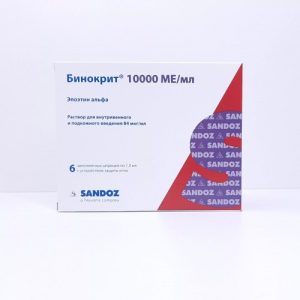 Click Here to Buy Binocrit EPO 10 000IU (6 pre-filled pens) by Sandoz
Click Here to Buy Binocrit EPO 10 000IU (6 pre-filled pens) by Sandoz
Which Animal's Bones Give the Best Broth?
Different animal bones can be used to make broth, each offering unique benefits for bodybuilding recovery. Here are some of the best options:
Beef Bones: Beef bones, especially marrow bones, knuckles, and joints, are rich in collagen and gelatin, which support joint health and muscle recovery. They also provide a deep, rich flavor and are packed with minerals like calcium and magnesium.
Chicken Bones: Chicken bones, particularly those from the feet and wings, are high in collagen and gelatin. Chicken broth is lighter in flavor but still rich in nutrients that aid in muscle repair and joint health.
Fish Bones: Fish bones, especially from oily fish like salmon, are excellent for a lighter broth that is rich in omega-3 fatty acids. These fatty acids have anti-inflammatory properties, which can help reduce muscle soreness and promote recovery.
Pork Bones: Pork bones, including the feet and hocks, are also good sources of collagen and gelatin. They produce a flavorful broth that can support joint and muscle health.
Lamb Bones: Lamb bones are another great option, providing a rich, flavorful broth that is high in collagen and minerals.
Each type of bone broth has its own unique flavor and nutritional profile, so you might want to try different ones to see which you prefer and which best supports your recovery needs.
Related Article: Essential Techniques to Master Squats Form
Overall
Can I use bone broth while on steroids? Yes, bone broth can be beneficial for bodybuilders who are using steroids or other supplements, as it provides essential nutrients that support overall health and recovery. Steroids and other performance-enhancing drugs often place additional stress on the body, particularly on the liver, kidneys, joints, and connective tissues. As mentioned, bone broth is rich in collagen, gelatin, amino acids like glycine and proline, and minerals such as calcium and magnesium, which help support joint health, reduce inflammation, and promote gut health. These benefits are especially important for bodybuilders using steroids, as these drugs can sometimes exacerbate joint pain, weaken connective tissues, or cause digestive issues.
Additionally, bone broth can help with hydration and provide electrolytes, supporting muscle function and recovery. While it shouldn't replace other key nutrients and should be used alongside a well-rounded diet and supplement regimen, bone broth can serve as a natural, nutrient-dense addition that helps mitigate some of the side effects of steroid use and enhances overall recovery and performance.
Bodybuilding
Calorie Dumping: A Bodybuilder’s Guide
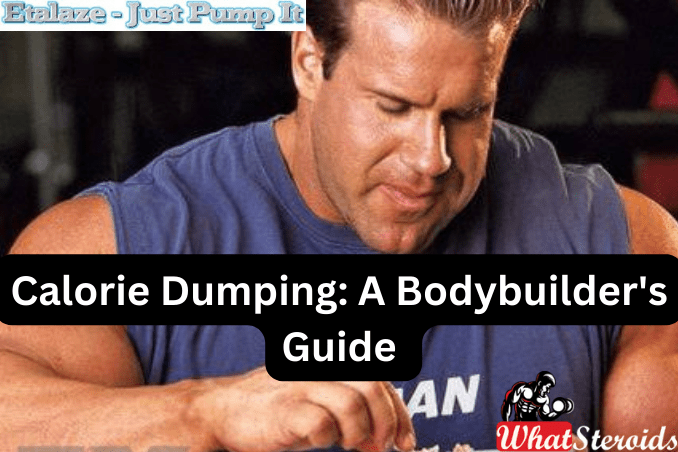
"Calorie dumping" in bodybuilding refers to a strategy where an individual consumes a large number of calories in a single meal, often following a period of low-calorie intake.
This practice is believed to support muscle growth by providing a surplus of energy and nutrients.
The idea is that after a period of restricted calorie intake, the body becomes more efficient at utilizing nutrients, making it more receptive to absorbing and utilizing the surplus calories in a short period.
However, this approach may not suit everyone and should be approached cautiously as it can lead to discomfort and potential digestive issues.
Calorie dumping, also known as refeeding or cycling calories, is sometimes preferred by bodybuilders to help prevent metabolic adaptation and aid in breaking through plateaus.
By occasionally consuming higher calorie levels, they aim to boost metabolism, replenish glycogen stores, and maintain hormone balance for better muscle growth and fat loss in the long term.
Bodybuilders focus on controlled nutrition plans to optimize muscle growth and minimize fat gain. However, occasionally, you might increase the calorie intake temporarily before an intense workout or competition to boost energy levels, but this isn't considered calorie dumping in the traditional sense.
ALSO READ: Your Guide to Become A Successful Personal Trainer
Long-term and Short-term Benefits of Calorie Dumping
Short-term benefits include replenishing glycogen stores, boosting metabolism, and providing mental relief from a strict diet.
Also known as a "refeed" or "cheat day," bodybuilders do calorie dumping for several long-term reasons:
Best Foods for Calorie Dumping
-

 Steroids2 years ago
Steroids2 years agoShavers and Other Body Grooming Equipment for Bodybuilders In 2023
-

 Steroids2 years ago
Steroids2 years agoChatGPT and Other Avenues to Find Great Bodybuilding Coaches
-

 Steroids2 years ago
Steroids2 years agoBest Oil Recommendations Before Competition for Subtle Shimmer
-

 Steroids2 years ago
Steroids2 years agoPowerlifting Vs Power Building: Find Out the Big Difference and When to Shift Between the Two
-

 Bodybuilding Products1 year ago
Bodybuilding Products1 year agoTelmisartan In Bodybuilding: An Expert’s Advice
-

 Anabolic Steroids1 year ago
Anabolic Steroids1 year agoLegality of Anabolic Steroids In Latin America
-

 Beginners2 years ago
Beginners2 years agoTren Cycle for Beginners
-

 Bodybuilding1 year ago
Bodybuilding1 year agoChia Seeds in A Bodybuilder’s Diet: An Expert’s Advice
-

 Anabolic Steroids9 months ago
Anabolic Steroids9 months agoJoint Stiffness: How to Manage It While on AAS
-

 Steroids12 months ago
Steroids12 months agoAnadrol Cycle: Benefits, Doses, Alternatives, etc.
-

 Bodybuilding8 months ago
Bodybuilding8 months agoPrimal Movements: Our Ultimate Guide for Maximum Results
-

 Bodybuilding1 year ago
Bodybuilding1 year agoList of FDA-Approved Peptides
-

 Bodybuilding2 years ago
Bodybuilding2 years agoCompetition Prep Cycle for Pro Bodybuilders
-

 Bodybuilding8 months ago
Bodybuilding8 months agoHow Effective is Bone Broth for Recovery?
-

 Steroids10 months ago
Steroids10 months agoOmnitope (Oxytocin)
-

 Bodybuilding1 year ago
Bodybuilding1 year agoHow Much Is Too Much Cardio? Understanding Heart Rate Zones
-

 Steroids9 months ago
Steroids9 months agoSleeping Positions for Effective Muscle Recovery
-

 Anabolic Steroids11 months ago
Anabolic Steroids11 months agoHow Much Do You Know About B-AET? A Fat Burner You’ve Been Missing
-

 Bodybuilding1 year ago
Bodybuilding1 year agoCalorie Dumping: A Bodybuilder’s Guide
-

 Bodybuilding8 months ago
Bodybuilding8 months ago2nd Edition of Natural Bodybuilding Competition Facts
-

 Product Reviews11 months ago
Product Reviews11 months agoTop Vitamins for Skin Health
-

 Bodybuilding1 year ago
Bodybuilding1 year agoDemystifying Hypertrophy Training
-

 Bodybuilding8 months ago
Bodybuilding8 months agoAre Nootropics a Better Option to AAS?
-

 Steroids11 months ago
Steroids11 months agoMajor Bodybuilding Peptides Explained
-

 Bodybuilding10 months ago
Bodybuilding10 months agoHormone Replacement Therapy (TRT) Cycle Guide





